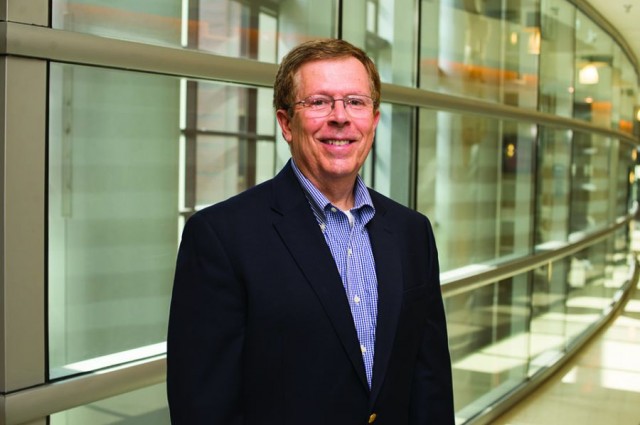The 2003 election Bishop Gene Robinson as the Episcopal Church’s first openly gay bishop set off an internal debate within the Episcopal Church caused Professor Mathew Sheep, Business Professor at Illinois State University, to ask how the church would respond and how it was that the Episcopal Church held together.
Illinois State University magazine:
…a number of members within several conservative dioceses and parishes to leave the church.
In the end the church retained about 90 percent of its membership, including many conservatives who opposed Robinson’s consecration as bishop. How did Episcopalian leaders and members reconcile their church’s identity with such a momentous change?
For the past decade, Illinois State Business Professor Mathew Sheep has worked with four other researchers from across the United States to study how the church viewed itself during this period. Their study has been accepted for publication in the Academy of Management Journal.
What the team found was that, rather than organizational identity being a fixed set of descriptions of the organization, it is instead a set of dialectical tensions that people attempt to balance or navigate every day in the way they talk about identity. In other words, organizations can stretch their identity—a concept the researchers called organizational identity elasticity—to allow for major changes.
Sheep studied the church over ten years starting in 2004.
That actually is one of the major differences in how people theorize organizational identity. And all these differences are good. Some people theorize organizational identity as very a priori. In other words, you come up with these preconceived notions of identity categories. Then you group organizations more or less quantitatively into these categories or groups.
Another way to look at identity is social construction. Identity is what people say it is. It’s really not being enacted in everyday life unless this is the way people actually talk about identity and construct the identity of their organization. So how are they doing that? And that is a social construction, which is a dynamic thing. It’s not a given. It’s contested. And it’s negotiated. And sometimes it has to be re-established periodically and changed periodically….
…It was a description of the way they saw the different ways … and what we eventually— from that and other interviews—theorized as elasticity. Those who would view it as prophetic would be taking the more inclusive, expansive view of identity as, “This is who we can be.” Interestingly they would also link it back to, “This who is we have always been. This is just part of our journey. This is just part of the trajectory of our identity.” Identity is not a stagnant state. It’s a moving stream, so to speak. So if they can think of it as who we are now and this is who we are becoming, but it’s not really inconsistent with who we have always really been at its foundation, then that is what they mean by this is of a prophetic sort of stance.
Those who would say, “It’s drifting into oblivion,” they would be saying, “It’s not a good path to take. It’s not a part of who we are. Therefore, it is a departure from who we have been.” And therefore that’s the way they would be constructing it.

